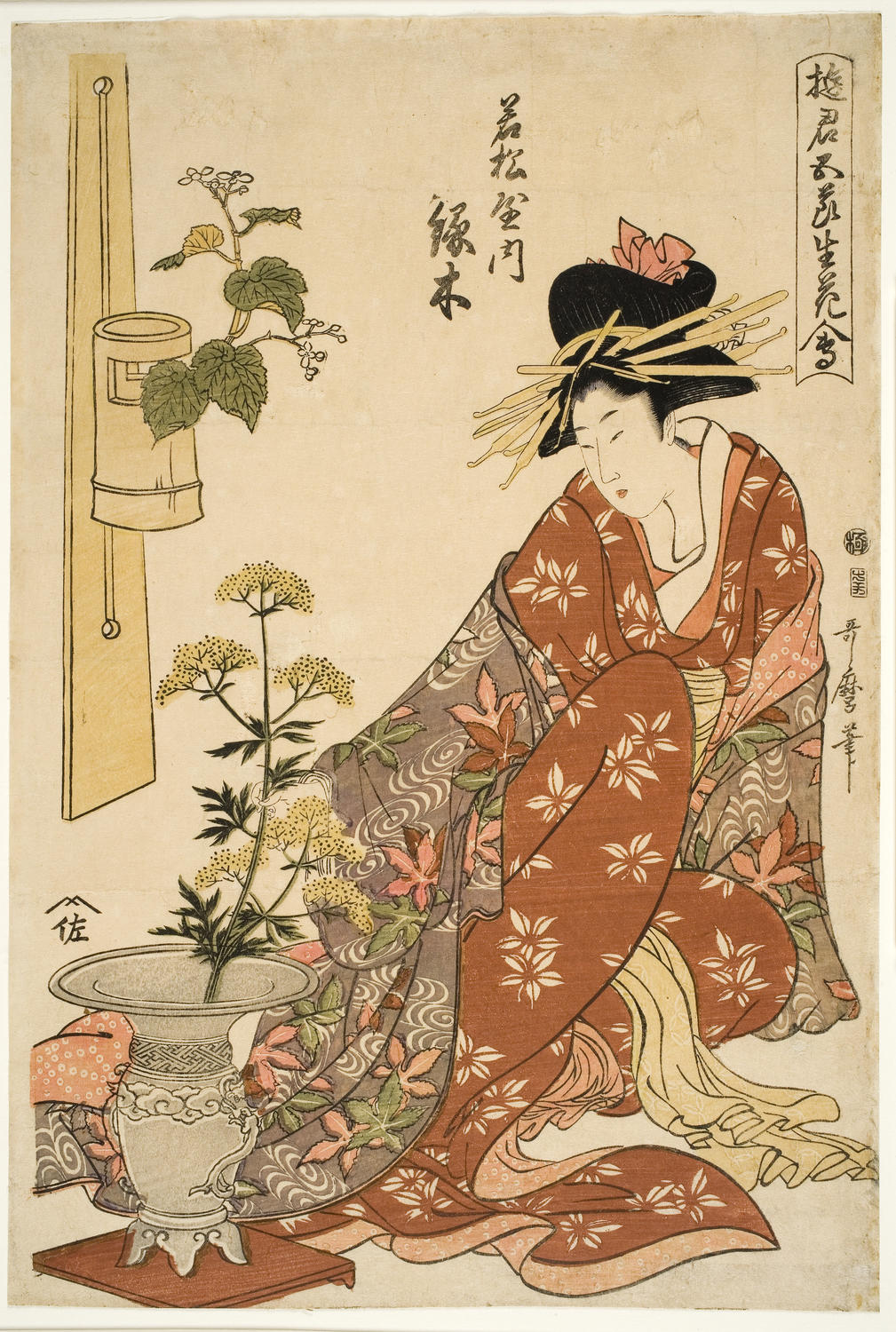Wakamatsuya uchi Midorigi

Kitagawa Utamaro, Wakamatsuya uchi Midorigi (Midorigi of the Wakamatsuya), from the series "Yukun Gosetsu Ikebana-e" (A Collection of Courtesans Arranging Flowers during the Five Festivals), ca. 1805, Color woodblock print, Gift of Mr. and Mrs. Joseph M. Edinburg (Dorothy Braude, Class of 1942) 1970.43
In this scene, the courtesan Midorigi, adorned with lavish robes and hair ornaments, delicately grasps a sprig of maiden flower as she performs the refined art of ikebana (flower arrangement). The print comes from Kitagawa Utamaro’s series “Yukun Gosetsu Ikebana-e” (A Collection of Courtesans Arranging Flowers during the Five Festivals). Along with Katsushika Hokusai and Utagawa Hiroshige, Utamaro is considered to be among the greatest Japanese printmakers. He was particularly famous for his works in the genre of bijinga or “pictures of beautiful women.” In this print, the artist evokes the season of the annual Tanabata festival through the color and motifs of the courtesan’s robes, along with the ominaeshi (maiden flower), which blooms in early autumn. Yet while the clothing and elaborate hairstyle of Midorigi are depicted in detail, her oval face, sloping nose and dainty mouth are not as individualized. Indeed, the idealized facial features and exaggerated, willowy proportions of Midorigi render her interchangeable with the other courtesans of the series. The aim of Utamaro’s print was less to depict the individual Midorigi than to evoke the idea of an elegant, high-class courtesan. In capturing the essence of ideal feminine beauty, prints such as Wakamatsuya uchi Midorigi could be universally appealing among urban Japanese audiences.
Chloe Pearce ‘21